Discover The Wild Life
The Wild Life

The Wild Life
Author: The Wild Life
Subscribed: 102Played: 3,024Subscribe
Share
© All rights reserved
Description
An optimistic, curiosity-chasing show about the wonder and wildness of life, following the threads that connect us to the natural world. The Wild Life is, always has been, and always will be a show about the diversity of life within the animal kingdom, but it's about more than that. It's about connections. It's about how the natural world inspires our culture, movies, and technologies. It's about the patterns that persist throughout not just life, but the universe itself. It's about us.
The Wild Life is a place for the curious, the adventurous, the hopeful, and the hopeless to discover the natural world through unique perspectives. Between the blog and podcasts, The Wild Life seeks to bring the traditional naturalist experience into the 21st century by merging immersive storytelling and foley art with technology and creative experiences. It’s an exploration of truth, common ground, and shared places as we attempt to fill each episode with wonder, connectedness, intrigue, and humor.
Thank you for being here.
Contact | devonlbowker@gmail.com
The Wild Life is a place for the curious, the adventurous, the hopeful, and the hopeless to discover the natural world through unique perspectives. Between the blog and podcasts, The Wild Life seeks to bring the traditional naturalist experience into the 21st century by merging immersive storytelling and foley art with technology and creative experiences. It’s an exploration of truth, common ground, and shared places as we attempt to fill each episode with wonder, connectedness, intrigue, and humor.
Thank you for being here.
Contact | devonlbowker@gmail.com
198 Episodes
Reverse
The Earth has ended before.Five times in the last half-billion years, life on this planet has been nearly wiped clean—reset by asteroid impacts, volcanic winters, and cataclysms we can barely imagine. And now? We’re living through number six. The difference? This one’s caused by us.But buried in those ancient endings are stories—lessons about resilience, adaptation, and the strange, beautiful creatures that made it through.In this episode, I’m joined by JP, better known online as @paleoauthor, the mind behind the upcoming book Primordial: A Biology of Ancient Triumphs and Tragedies. Together, we explore:Previous mass extinction events and what they can teach us about the one we’re in nowWhy dinosaurs still capture our collective imaginationThe weirdest prehistoric animals you’ve never heard ofThe influence of media and film on our understanding of deep timeHow telling the stories of the past might help us change the futureIt’s part science, part storytelling, and part love letter to life itself.Links & Resources:Follow JP on Instagram: @paleoauthorSupport The Wild Life on Patreon
Meet the aye-aye (Daubentonia madagascariensis), a creature so strange that early scientists couldn’t even decide if it was a rodent, a squirrel, or… something entirely new. Native to Madagascar and the largest nocturnal primate in the world, the aye-aye sports perpetually growing teeth, a bat-like ear for echolocation, and a freakishly long, bony middle finger that can hook grubs from deep inside tree trunks—or, yes, pick its own nose.In this episode, we dive into its percussive foraging superpower, its evolutionary mystery, and why it fills the same ecological niche as a woodpecker. Field Guide of Wonder is a companion to my main show The Wild Life, giving you quick, vivid snapshots of the planet’s most remarkable creatures.If you enjoy the show and want to help keep it going, consider supporting on PatreonStay weird :)-Devon
Meet the world’s largest rodent—the capybara (Hydrochoerus hydrochaeris), a creature so wonderfully chill it makes a golden retriever look high-strung. In this episode, we dive beyond the memesto explore what makes capybaras such an evolutionary success story.We’ll talk:Why “semi-aquatic social loaf of bread” might be the perfect lifestyleTheir remarkable teeth, digestive superpowers… and yes, why they eat their own poopThe wild variety of vocalizations they use to chat with each otherHow babysitting is a survival strategyThe surprising ways their biology connects to the ecosystems they live inFrom their South American wetlands to their unlikely friendships with everything from birds to caimans, capybaras prove that being laid-back is a legitimate survival tactic.Listen, wonder, and maybe… book a ticket to the Pantanal.Support The Wild Life's Field Guide of Wonder at www.patreon.com/thewildlife for as little as $1 per month
Hey everyone! I have some news to share 😊Field Guide of Wonder—my social media video series— is getting a podcast companion!And here is the first episode!It'll be short, spectacular stories of the weirdest, wildest, most wonderful creatures on earth, in a format that hopefully gives these animals more room to stretch their wings, claws, pseudopods, or whatever it is they’ve got.It’ll be bite-sized but packed with questions you didn’t know you had, facts that feel like magic, and connections that make this tangled web of life feel even more alive.If you'd like to support the creation of this series, you can join my patreon at www.patreon.com/thewildlife for FREE. You can also support its creation at patreon for as little as $1 per month. Y’all, you know I post A LOT 😅 $1 per month comes out to 1.33 CENTS per piece of content. Like, literally, I did the math 😂Stay weird. Stay curious. Stay wild.
Hey everyone!I’m really excited to share with you all my conversation with the thoughtful and inspiring Alexa Pavan, aka @GoGreenWithAlexa.We dive into everything from accessible sustainability and composting, to coral bleaching, water bottles, and beach cleanups. It’s a chat about progress over perfection, the importance of small, everyday actions, and finding hope in the face of big, global challenges.We talk:🪸 Coral reefs and climate change♻️ Reducing waste without shame🌱 What it actually means to live sustainably💚 How individual choices can ripple outward🌍 Interconnectedness, agency, and actionable hopeIt’s full of insight, encouragement, and gentle reminders that we don’t have to do everything—but we can all do something.As always, thank you for listening to The Wild Life. If you’d like to help continue making episodes like this possible, you can join for as little as $1 per month (a penny per piece of content) at www.patreon.com/thewildlife. Your support means the world—and makes this work sustainable (see what I did there?).-Devon
What happens when you follow curiosity wherever it leads?In this episode of The Wild Life, I’m joined by Emily Hunter—a passionate environmental science educator, interpretation specialist, bushwalk guide, and nature communicator currently living and working along Australia’s Ningaloo Reef.Emily shares her journey from being a "tree hugger" kid in Idaho to becoming a globe-trotting interpreter of nature's stories, using awe as a tool for connection. We explore the power of wonder as a precursor to knowledge, how interpretation helps break down scientific gatekeeping, and what it really means to talk on behalf of the land, sea, and sky.Along the way, we dive into:Why knowledge alone doesn’t spark change—but wonder mightThe magic of the Ningaloo ReefWhat it's like to snorkel with first-timers and hike with strangers before sunriseWhy environmental education needs weirdness, joy, and emotional honestyAnd how following a sticker or a Facebook post can change your lifeWhether you’re a student wondering how to get started, a teacher trying to bring passion into your practice, or someone who’s just trying to rekindle that childhood spark of curiosity—this one’s for you.🌏 You don’t have to live near a coral reef to live a rich, curious, nature-connected life.Sometimes it starts with a question. Or a shell. Or a really good sunrise.📣 Share this episode with someone who needs to be reminded that weird is good—and wonder matters.
What do a gaur, an aardvark, a flattened musk turtle, and a Matschie’s tree kangaroo have in common?They’ve all been photographed beautifully, reverently, and intentionally by my next guest—wildlife and zoo photographer Jay Meredith.In this episode, Jay shares the story behind his incredible project, The Animal Archives, documenting over 1,000 animal species across accredited zoos, aquariums, and conservation centers. But this is more than a numbers game. It’s a mission to help people fall in love with the overlooked, the endangered, and the often-forgotten.We talk about how Jay transitioned from zookeeper to photographer, the difference between photographing wild vs. captive animals, what it means to truly see an animal, why education and storytelling are just as important as the image itself, and the little-known species Jay wants everyone to know about!This episode is about photography, yes—but really, it’s about wonder. It’s about noticing. And it’s about how we grow empathy for the world when we take time to look closely.📸 Follow Jay on Instagram: @photos_with_jay_108 🦥 Support The Wild Life and Get Early Access at www.patreon.com/thewildlife
Today is #WorldOceansDay and I’m feeling a whole lot of things. Wonder. Grief. Hope. Determination.The ocean isn’t just a place to visit. It’s not just a good backdrop for photos.It’s breath. It’s mystery. It’s the engine of life on Earth. And right now? It needs us.This isn’t a doom post. It’s a love letter.To the sea slugs and phytoplankton.To coral metropolises and whales that sing.And to whoever has felt small in the best possible way, standing in front of something as vast and alive as our seas.Let’s protect what’s left.Let’s restore what we can.Let’s be the kind of people the ocean would be proud of.~Devon
What if the key to understanding our future was hidden in the teeth of creatures that lived millions of years ago? In this episode, we dive into the world of dental microwear with paleontologist Andrew Schwartz (@eyesonthedirt), who takes us from the fossil beds of ancient Wyoming to the jungles of Costa Rica and the highlands of the Wari Empire. Along the way, we uncover how past climate shifts reshaped life on Earth—and what that means for us today.We explore:How capuchin monkeys and ancient Andean civilizations left clues in their teethWhat the Paleocene-Eocene Thermal Maximum (PETM) can teach us about modern climate changeWhy some mammals shrank while others thrivedWhat a warming world could mean for our ecosystems, agriculture, and future survivalLinks & Resources:Learn more about Andrew Schwartz’s researchDeep dive into the PETM and its modern implicationsSupport The Wild Life on Patreon!If you love deep dives into science and nature, consider supporting The Wild Life on Patreon. Your support helps me continue making episodes like this, bringing expert voices and fascinating stories. Plus, Patrons get bonus content, early access, and more! Join us at Patreon.com/TheWildLife.Let me know what you think! Leave a review, share the episode, and keep exploring the wild world around you.
Giant river otters are social, intelligent, and deeply connected to the health of their ecosystems—but what happens when their food supply starts to dwindle? In this episode of The Wild Life, we’re joined by Katherine Foree, a researcher studying how these apex predators use their habitat in the Madre de Dios region of Peru. With a Fulbright grant supporting both her research and cultural exchange, Katherine is three months into her work at Cocha Cashu Biological Station and preparing for a second study on the impact of fish depletion on otter food-sharing behaviors. We also dive into her past experiences with orangutans, lemurs, and conservation challenges around the world. Join us as we explore the fascinating lives of giant river otters and what they can teach us about the delicate balance of the Amazon’s waterways, talk books, the often overlooked humanity of scientists, animal psychology, and so much more!Support The Wild Life at www.patreon.com/thewildlifeFollow Kat on Instagram @a.kat.named.rin
Joining The Wild Life today is Dylan Beckham! She spent two years as a zookeeper caring for all sorts of exotics, including reptiles, invertebrates, fish, emus, wallabies, genets and Eurasian harvest mice. As a herpetology enthusiast, she was surprised to find it was the mice that stole her heart. This led to the development of her independent research project investigating their nesting behaviors in captivity, before ultimately leaving the zoo to pursue her passion for wildlife research. She managed to fit in an adventure to Canada, where she interned at a wildlife rehab facility, wrestled raccoons, and fell madly in love with a three-legged beaver! Now she's wading through nearly a hundred hours of harvest mouse data, while preparing to return to university for a top-up Bachelor's degree in September, where she'll be doing a research project on human-elephant conflict in Equatorial Guinea. Whether you're fascinated by the world of zookeeping, curious about the nuances of data collection, or passionate about conservation, this episode is for you. Follow Dylan on InstagramHave questions, topic suggestions, or want to be on the show? Email me at devonlbowker@gmail.com or dm me on Instagram or TikTok @devonthenatureguySupport The Wild Life for as little as $1 per month at www.patreon.com/thewildlife
Where there's smoke, there's fire. But when that fire tears through a landscape, what happens next? Today, we dive into the world of pyrophytic ecosystems—those that not only survive but thrive on fire. Our guide on today's journey is Ross Barreto, a master's student studying native plant population dynamics and spatial ecology. He's also an Urban Forester and likes to experiment with native plant propagation, seed production, and outplanting for restoration and horticulture purposes. We explore the role of fire in Florida's ecosystems, native plants, and the resilience of nature.Follow Ross on Instagram @barross0505Have questions, topic suggestions, or want to be on the show? Email me at devonlbowker@gmail.com or dm me on Instagram or TikTok @devonthenatureguySupport The Wild Life for as little as $1 per month at www.patreon.com/thewildlife
Welcome to The Wild Life! On today's episode, we have a fascinating guest: wildlife cinematographer Jake Davis.Jake’s career began by focusing on the wildlife of the Greater Yellowstone Ecosystem. Growing up, he spent his summers in Jackson Hole, Wyoming, where the Teton Range's jagged peaks and abundant wildlife fostered a deep love for nature and a desire to share and preserve it. Today, while Jake travels the globe to film the stories of vulnerable wildlife, the Greater Yellowstone Ecosystem remains his home.As a cinematographer, Jake works on natural history productions for renowned platforms like BBC, National Geographic, Disney, Netflix, and Apple. Most recently, he spent five months filming snow leopards in Mongolia for the third installment of BBC's famous series "Planet Earth.” His recent work has been part of a series nominated for a 2023 Emmy and for Best Cinematography at the prestigious Jackson Wild Film Festival.Jake’s work incorporates diverse filming techniques, including long lens, drone, and gimbals, but he is best known for his novel approach to filming wildlife with high-tech camera traps. He also created the world’s first collection of wildlife Ambrotypes, featuring images on glass plates. Among his accolades, Jake was a 2019 finalist in the renowned Wildlife Photographer of the Year competition held by the London Natural History Museum, and his work has been displayed at the Smithsonian in the Exhibition of Nature's Best Photography. His nature greeting card line is sold in stores across the western United States, including REIs and the Yellowstone stores.In this episode, we discuss the importance of understanding animal behavior and ecology to capture the perfect shot and effectively tell their stories. We explore the future and potential of artificial intelligence in wildlife filmmaking, the "chicken or the egg" question of wildlife cinematography, and the challenges of working off-grid. Jake shares his experiences with camera traps, the heart-wrenching decisions of the footage chopping block, and how to craft compelling narratives without words.Join us for an in-depth conversation that highlights the blend of artistry and science required to bring the wild to our screens. Check out his website and order some printsCheck out his galleryFollow Jake on InstagramHave questions, topic suggestions, or want to be on the show? Email me at devonlbowker@gmail.com or dm me on Instagram or TikTok @devonthenatureguySupport The Wild Life for as little as $1 per month at www.patreon.com/thewildlife
In this episode of The Wild Life, animal welfare scientist Maggie Herskowitz helps us navigate the tangled webs society has woven around the treatment of animals, both wild and domestic. Gray areas, moral calculations, trophy hunting, industrial-scale fishing and livestock, and the emerging field of conservation ethics. Our conversation spans a range of topics including sloth bears, baby chicks, wolves, porpoises, The Grind, social media's impact on monkeys, and the infamous case of Cecil the Lion.Please be aware that this episode includes discussions about the death and killing of animals, mistreatment, and animal abuse, among other sensitive topics. Listener discretion is advised.Join us for a thought-provoking and often challenging discussion that sheds light on the complex and sometimes uncomfortable realities of animal welfare. Let's dive in with Maggie Herskowitz and explore the critical issues at the heart of how we treat our fellow creatures.Follow Maggie on XLearn more about MaggieCheck out her YouTube!Have questions, topic suggestions, or want to be on the show? Email me at devonlbowker@gmail.com or dm me on Instagram or TikTok @devonthenatureguySupport The Wild Life for as little as $1 per month at www.patreon.com/thewildlife
The world is full of science and, in turn, scientists, and not enough people who truly have that spark for communicating all of that discovery and wonder to the rest of the world. People like today's guest—Dr Carly Anne York (@BiologyCarly). She's an Associate Professor at Lenoir-Rhyne University, an Animal Physiologist, a Science Communicator, and an Author.Today, science communication, children’s books, squid physiology, mindblowing animal facts, things that are true that are hard to believe, academic and environmental activism, holding onto hope in a world that seems insistent that we shouldn’t, and advice for future scientistsCheck out her websiteCarly on XCarly on InstagramCarly on TikTokYou can support The Wild Life by becoming a member on Patreon for as little as $1 per month Have questions, guest recommendations, or want to join the email list? Contact me here OR at hello@thewildlife.blog
Welcome to The Wild Life, the podcast where we explore the wonders of the natural world and the science that helps us understand it. In this episode, we have an extraordinary guest: Aidan Branney. When we first recorded this interview nearly a year ago, Aidan was working as the large carnivore scientific aid for the California Department of Fish and Wildlife. Today, he’s a Presidential Research Fellow at the University of Georgia, where he studies large carnivores including lions, leopards, cheetahs, and spotted hyenas in Etosha National Park in Namibia.In this episode, we delve into Aidan's fascinating educational and professional journey, his work on ocelots in Texas, and his research on coyotes, black bears, and bobcats. We'll explore what defines carnivores and the complex challenge of balancing ecological needs with stakeholder interests. Aidan shares insights into estimating populations and monitoring changes in these majestic animals, and we'll discuss how to maintain hope and persevere in a world where conservation efforts often feel like trying to slow a leaking dam with duct tape.Join us as we venture into the wild world of carnivore ecology with Aidan Branney, uncovering the science, the struggles, and the triumphs of studying and protecting some of the planet's most charismatic creatures.Aidan on InstagramAidan on XSupport The Wild Life
17 years ago, I was a 14 year old attending Connor Middle School in Hebron, Kentucky. Small little town, just across the Ohio River. In 2018, I moved away, back down to Houston, TX. But in the few years I was there, I met and became friends with some of the most amazing people, most of which I lost contact with over the yearsThen one day, sometime last year or so, a familiar name popped up on my feed—an old friend, and today’s guest.On today's episode, Dr Tiffany Slater tells us all about her amazing discoveries and career as a taphonomist! Searching for molecular ghosts in the fossil record, ginger frogs, ancient proteins, learning there’s a difference between aging fossils and dating fossils, feathered connections, archaeopteryx, perspectives, particle accelerators, and of course, catching up…Dinosaur feathers reveal traces of ancient proteinsDr Tiffany Slater's University of College Cork ProfileSupport the ShowContact | hello@thewildlife.blogFollow Devon on TikTok and InstagramFollow Tiffany on Twitter
From their three hearts to their ability to transform and communicate, discover the extraordinary world of octopuses with host Devon Bowker and special guest Sy Montgomery, the "octopus whisperer" herself, and octopus expert Warren Carlyle, founder of OctoNation®. In a new adventure, Secrets of the Octopus, they dive deep into the secrets of the ocean's most enigmatic creatures, exploring the latest revelations in octopus research and conservation efforts. With captivating storytelling and stunning visuals, the pair uncover why these creatures are worthy of our admiration and protection.Secrets of the Octopus | BookTRAILER| Secrets of the Octopus on National Geographic and Disney+OctoNationSupport the ShowContact | hello@thewildlife.blogFollow Devon on TikTok and InstagramFollow Sy MontgomeryFollow Warren Carlyle
In this episode, Devon (@devonthenatureguy) sits down with Lauren Jackson (@lauren.queenofthewild on Instagram and HERp_trap_queen on TikTok) to chat about becoming a wildlife tech, woodpeckers, federal jobs, the friction of private land, scicomm and education, battles big and small, and above all else, love for the world around us.Support the show at www.patreon.com/thewildlife for as little as $1 per month
Today’s episode, social media SciComm, all things cephalopod, their super cool brains, their mind-blowing camouflage, RNA editing, peculiar romances, underappreciated "living fossils", and why octopuses are most definitely not aliens. All with special guest Meg Mindlin, Octopus BiologistMeg's WebsiteSave the Ocean, Save the World HoodieMeg's Sticker ClubSupport The Wild Life


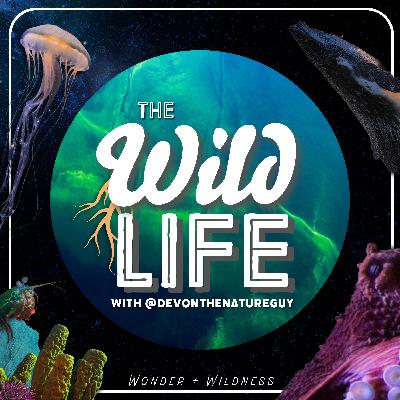
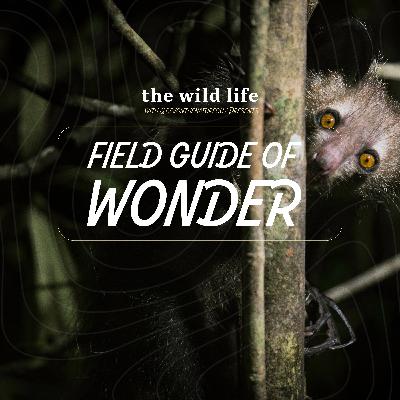
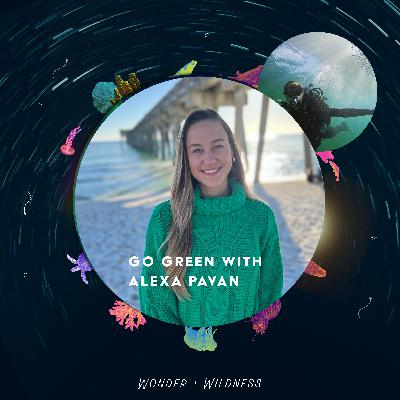
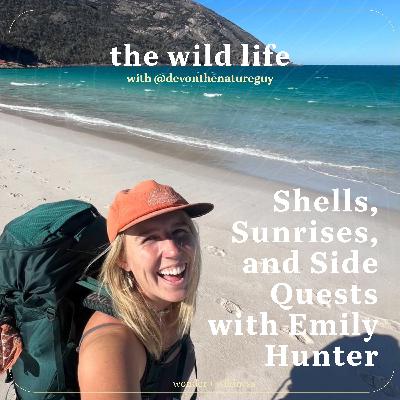
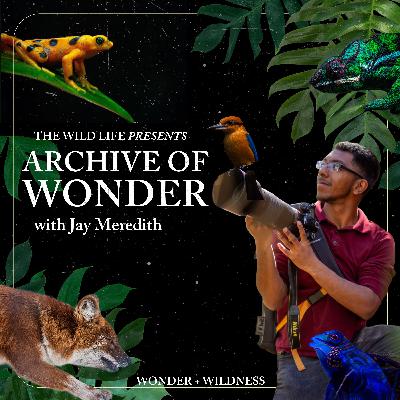
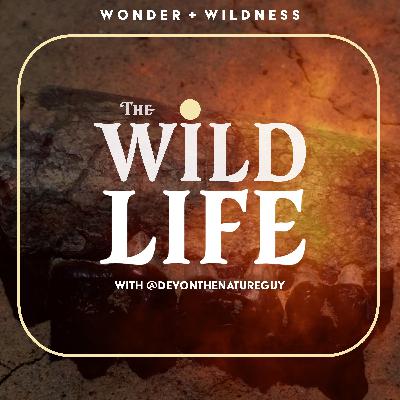

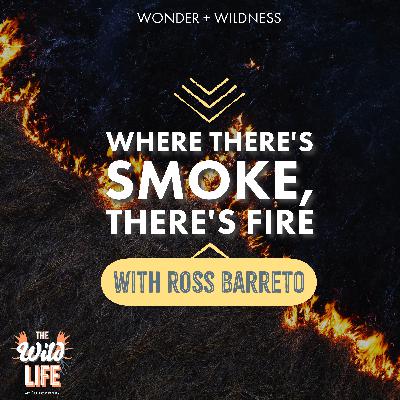
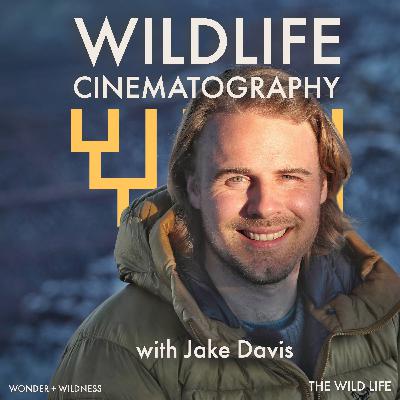
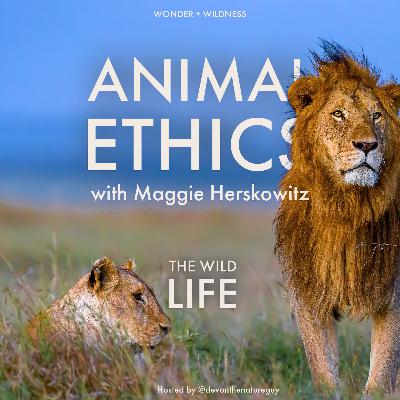

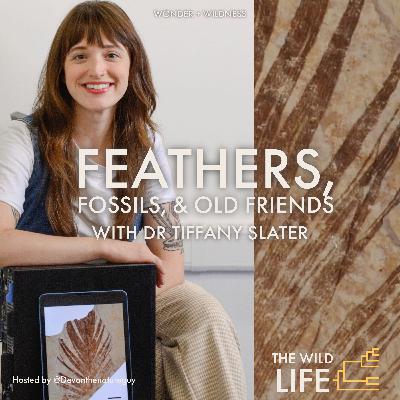



Thanks for letting me come be a part of this! I really enjoyed talking to you!
bff Megan here, I would like to point out that you said Seagulls multiple times in place of Gulls. that is all. also, loved this one :)